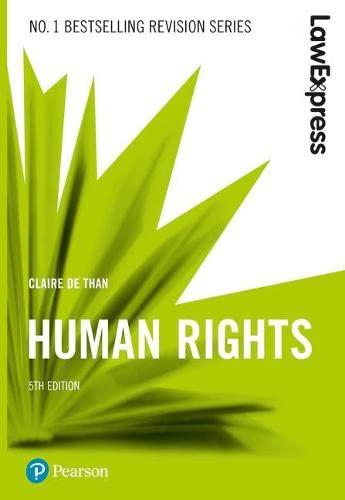Answered step by step
Verified Expert Solution
Question
1 Approved Answer
Use the IRAC method as explained wtih essay type Question 1 (15 marks) The feasibility study for the transition into fully automated stores of Smart
Use the IRAC method as explained wtih essay type Question 1 (15 marks) The feasibility study for the transition into fully automated stores of Smart Super Stores Pty Ltd (SSS) indicates that several million dollars will need to be invested in the first three years on software and hardware development as well as plant and equipment. At the first meeting of the board of SSS, the directors discuss the various options available to SSS to fund that project. These options include: 1. asking its holding company FutureFoods Ltd (FF) and existing shareholders to subscribe to additional shares in SSS, or 2. borrowing money from SSS, some major SSS' shareholders, or external lenders such as banks. You have been asked to advise the board of directors in regard to: (i) What are the key differences and factors for SM to make an informed decision between debt and equity funding? (ii) What legal considerations should the board of directors of SM bear in mind when issuing shares or securing a loan? (iii) According to your professional opinion, which of these is the best course of action for SM to fund the project? Question 2 (15 marks) SpeedArrow Pty Ltd ('SpeedArrow') is a small hire-car company. On 1st February 2020, one of SpeedArrow's creditors filed an application for a compulsory winding up in insolvency. The application was granted and the court made the relevant orders to wind up SpeedArrow on 20th May 2020. Hannah was appointed as the liquidator and, following her investigation into SpeedArrow's affairs, she estimated that SpeedArrow's assets (plant and equipment and cash at bank) were worth about $50,000 and that SpeedArrow's creditors (not including Pedro - see below) were owed $200,000. Hannah is not completely confident that this estimate is accurate since the company does not seem to have kept proper financial records. Hannah's research has also uncovered a number of company transactions that she would like to investigate further. For example, Samantha (the managing director and majority shareholder of SpeedArrow) caused SpeedArrow to sell a car to her good friend Joe for $10,000 on 21st November 2018. This was less than half the car's appraised value. At the time, Joe had no knowledge of SpeedArrow's financial position. On 1st November 2018, Samantha gave $20,000 from the company funds to her daughter Ruby as an 18th birthday present, who purchased a car with the money. Several years ago, SpeedArrow took out an unsecured loan for $50,000 from GoldLenders. In December 2019, SpeedArrow negotiated to make 'interest only' payments on the loan for the following 12 months (up until then the payment schedule had required 'principal and interest' payments). As part of that agreement, SpeedArrow granted GoldLenders a circulating security interest over its fleet of cars as security for the existing loan, and GoldLenders immediately registered that security interest. On 18th January 2019, Samantha told her friend Pedro (who was owed $20,000 by SpeedArrow) that SpeedArrow was 'hopelessly insolvent' and that it would not be able to repay the whole amount. Pedro agreed to accept a payment of $10,000 in full and final satisfaction of the debt. In relation to each of the four (4) transactions described in the preceding paragraphs, explain whether any money might be recoverable by the liquidator for distribution to unsecured creditors and, if so, on what grounds. What other sources of funds might also be available for distribution to unsecured creditors
Step by Step Solution
There are 3 Steps involved in it
Step: 1

Get Instant Access to Expert-Tailored Solutions
See step-by-step solutions with expert insights and AI powered tools for academic success
Step: 2

Step: 3

Ace Your Homework with AI
Get the answers you need in no time with our AI-driven, step-by-step assistance
Get Started


